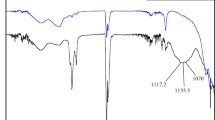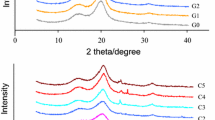Abstract
Xylan is the major component of hemicellulose, which consists of up to one-third of the lignocellulosic biomass. When the zinc chloride solution was used as a pretreatment agent to facilitate cellulose hydrolysis, hemicellulose was hydrolyzed during the pretreatment stage. In this study, xylan was used as a model to study the hydrolysis of hemicellulose in zinc chloride solution. The degradation of xylose that is released from xylan was reduced by the formation of zinc-xylose complex. The xylose yield was >90% (w/w) at 70°C. The yield and rate of hydrolysis were a function of temperature and the concentration of zinc chloride. The ratio of zinc chloride can be decreased from 9 to 1.3 (w/w). At this ratio, 76% of xylose yield was obtained. When wheat straw was pretreated with a concentrated zinc chloride solution, the hemicellulose hydrolysate contained only xylose and trace amounts of arabinose and oligosaccharides. With this approach, the hemicellulose hydrolysate can be separated from cellulose residue, which would be hydrolyzed subsequently to glucose by acid or enzymes to produce glucose. This production scheme provided a method to produce glucose and xylose in different streams, which can be fermented in separated fermenters.
Similar content being viewed by others
References
Ladisch, M. R. (1989), inBiomass Handbook, Edited by Kitani, O., Hall, C. W., Gordon and Breach Science Publishers, New York, p. 435.
Du Preez, J. C., Bosch, M., and Prior, B. A. (1986),Appl. Microbiol. Technol. 23, 228.
Rizzi, M., et al. (1988),Biotechnol. Bioeng. 34, 509.
Laplace, J. M., Delgenes, J. P., Moletta, R., and Navarro, J. M. (1993),Appl. Microbiol. Biotechnol. 39, 760.
Slininger, P. J., et al. (1991),Biotechnol. Bioeng. 37, 973.
Panchal, C. J. (1988),Can. J. Microbiol. 34, 1316.
Wayman, M. (1986), inCellulose, Young, R. A. and Rowell, R. M., eds., Wiley-Interscience, New York, p. 265.
Fontana, J. D., et al. (1984),Biotechnol. Bioeng. Symp. 175.
Hormeyer, H. F., Bonn, G., Kim, D. W., and Bobleter, O. (1987),J. Wood Chem. Technol. 7, 269.
Bobleter, O., Schwald, W., Bonn, G., and Esterbauer, H. (1985), Austrian Patent No. A 102/85.
Banerjee, M. (1989)Appl. Environ. Microbiol. 55, 1169.
Nikitin, N. I. (1966),The Chemistry of Cellulose and Wood, Israel Program for Scientific Translation, p. 74.
Cao, N. J., Xu, Q., Chen, C. S., Gong, C. S., and Chen, L. F. (1994),Appl. Biochem. Biotechnol. 45/46, 521.
Cao, N. J., Xu, Q., and Chen, L. F. (1994) Sixteen Symposium on Biotechnology for Fuels and Chemicals, in Gatlinburg, TN.
Wenda, L. (1990),J. Wood Chem. Technol. 10, 123.
Author information
Authors and Affiliations
Rights and permissions
About this article
Cite this article
Cao, N.J., Xu, Q. & Chen, L.F. Xylan hydrolysis in zinc chloride solution. Appl Biochem Biotechnol 51, 97–104 (1995). https://doi.org/10.1007/BF02933414
Issue Date:
DOI: https://doi.org/10.1007/BF02933414




